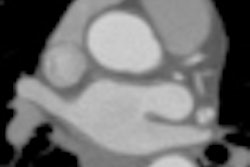Dear MRI Insider,
Welcome to the first edition of the AuntMinnieEurope.com MRI Insider. This email newsletter will provide regular updates on the latest MRI developments in Europe, as reported in our new MRI Digital Community.
It's certainly been a hectic month for MRI, in terms of both congress presentations and original research articles. At the British Institute of Radiology (BIR) President's Conference in London, consultant cardiologist Dr. Mark Westwood explained how cardiac MR can produce fast, clinically useful results, particularly with cooperative patients. Technique is all-important, he noted. For the full story, click here.
Radiologists from Jena, Germany, have found that the fusion of 3-tesla MR images with x-ray mammograms can lead to clinically significant improvements in clinical workflow and diagnostic accuracy. They have shown that the semiautomatic image registration of x-ray mammography and high-field MRI is both feasible and beneficial. Click here for the details.
European researchers were active participants at last month's International Society for Magnetic Resonance in Medicine (ISMRM) meeting in Montreal, Canada. For instance, a group from the University of Bonn, Germany, revealed that MR angiography with blood-pool contrast can help simultaneously detect and assess arterial and additional venous conditions. Click here to read staff writer Wayne Forrest's onsite report.
New guidelines from the European Society of Urogenital Radiology on dealing with uterine cervical cancer patients have confirmed the value of MRI as the imaging modality of choice for preoperative staging and follow-up. The lead author of the guidelines is Dr. Corinne Balleyguier from Paris, who is a member of AuntMinnieEurope.com's editorial advisory board. To read more, click here.
Tackling the medical issue of unexplained nipple discharge can prove especially challenging. Italian researchers emphasize that breast MRI can find additional cancers, not recognized or occult when conventional imaging is used. Click here to find out more.
Finally, make sure you check out the MRI Digital Community next week for a guest column about how ultrafast MR systems can be used successfully in cardiac patients.



















